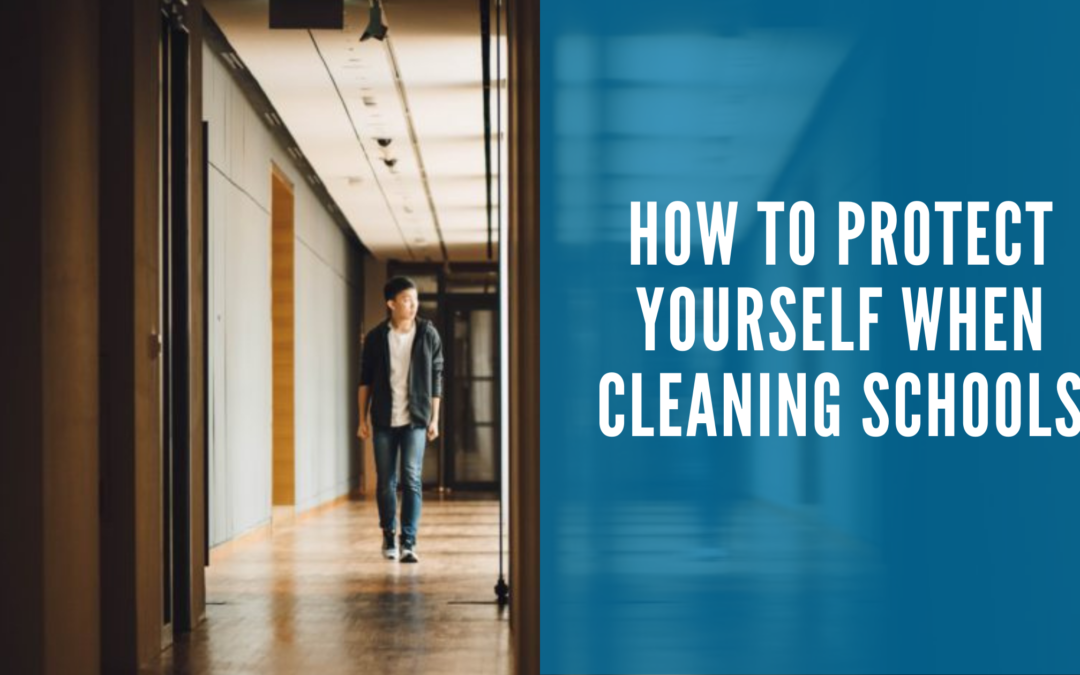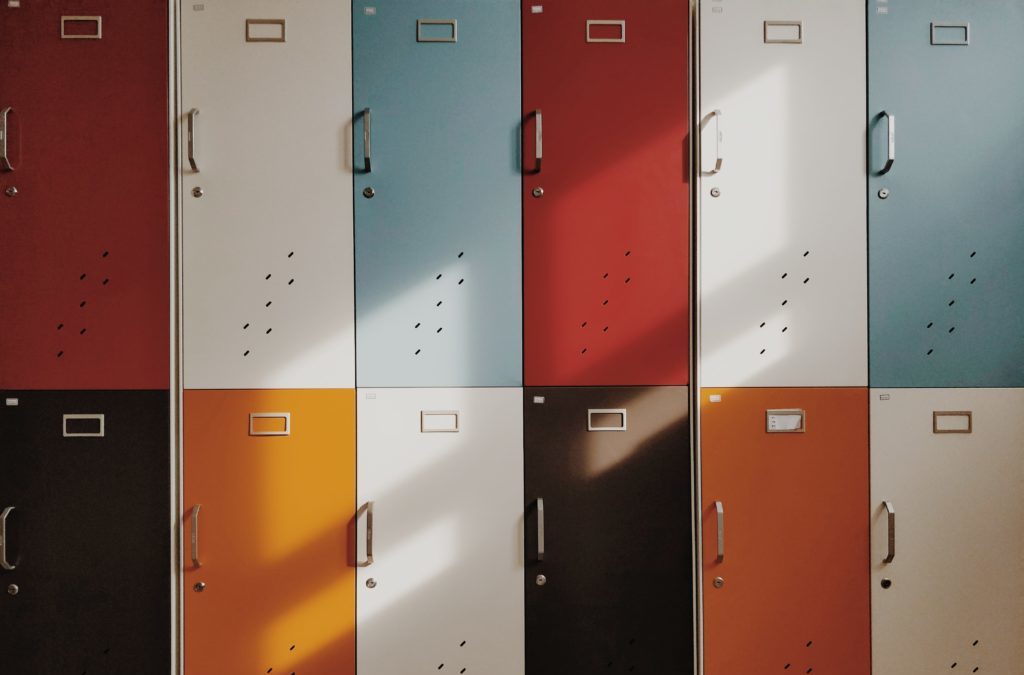The protocol for cleaning schools is changing. Here’s what janitorial teams need to know about staying safe and keeping students safe.
As you are cleaning schools and focusing on protecting students, staff, and teachers, it’s easy to forget that you need to protect yourself, as well. Yes, we all miss those days of not giving a second thought to walking into a classroom and sweeping up stray bits of paper or bent staples that missed the trash bin and ended up on the floor. We all certainly wish that we could return to our comparatively simple cleaning procedures that seem like a distant memory.
But just like everything else, cleaning schools and classrooms has changed dramatically. In fact, protocols for janitorial teams in schools, which were once pretty standard, are drastically different today. There are several reasons for this. Your “clients” range in age from the preschool set too unruly middle schoolers to stressed-out high school kids to teachers closing in on retirement. You’re working with populations who may have an increased risk of contracting and experiencing medical complications from COVID-19. Some of the people you work around may practice diligent hand-washing and mask-wearing, while others are still wiping runny noses on their sleeves.
In all this, it’s easy to neglect yourself. It’s easy to loosen your standards and let things slide a little bit. Can you honestly say you’re still washing your hands as often as you did when this all began?
It’s not hard to protect yourself as you’re cleaning schools. The trick is remembering to do it. Here are some tips for jogging the memory and serving as reminders of how important it is to take care of yourself so you can take care of others.
Janitorial software can help you to create and manage your COVID-19 cleaning plan. Check out a demo of Janitorial Manager today to see how we can help keep your school safe.
Cleaning schools: How janitorial teams can stay safe (and keep others safe)
According to pretty much every health professional out there, the two most straightforward, most effective ways to prevent the spread of COVID-19 (not to mention the common cold and seasonal flu) are to wash your hands regularly and wear a mask. It’s not that hard, and aside from a mask, you don’t need special equipment to do this.
Not only that, but you know how to do both of these. Wash your hands regularly with warm water and soap. Scrub for 30 seconds, then rinse. Easy.
And the mask? It needs to cover your nose and mouth. The primary way that COVID-19 spreads is through airborne droplets. You can both exhale and inhale these droplets through your mouth and nose. Therefore, to keep yourself and your community safe, make sure your mask is on correctly. And while we’re here, a face shield alone won’t do a lot to protect you. Airborne particles have more than enough room to go around or under those.
Beyond masks, personal protective equipment, or PPE, may or may not be necessary. That’s dependent on where and what you are cleaning. Gloves are pretty standard these days. If you’re cleaning schools or classrooms with products that may be hazardous or cause irritation if you inhale or contact them, you may also need to wear protective eyewear.
Beyond PPE: How to stay safe while you are working in schools
1. Conducting an assessment
To remain safe while you’re cleaning schools, it’s essential to work with staff and administration to identify possible hazards. This is true for workplace safety as a whole, even beyond what we may face with COVID-19. The Occupational Safety and Health Administration (OSHA) has a wealth of information about workplace safety specific to COVID-19 that you may want to check out. More specifically, they have a page dedicated to janitorial and cleaning services that describes different levels of exposure risk.
2. Use proper ventilation
The real secret to staying safe is ventilation. As much as possible, bring fresh air into a room by opening windows. Fans can help, but be sure you aren’t blowing contaminated air around the room. Closed windows with fans running won’t do much to clean out the air; it will just circulate any contaminates already in the room.
We all know that many of the schools are in older buildings with limited capacity for proper airflow and filtering. But again, the more fresh air you can let into the building, the better of you and everyone else will be.
3. Keep your distance
Aside from masks, one of the best things you can do to keep yourself safe is to limit contact with potentially infected people. While it may be unrealistic to completely isolate yourself in a school building, you can work to keep physical distance and decrease the amount of time you are in proximity to others.
4. Keep a comprehensive checklist
Maintaining a cleaning checklist ensures your team keeps up with cleaning procedures, and it keeps everyone in the building safe. It’s also a great way to determine if you need to add more staff to help in cleaning schools thoroughly throughout the day.
5. Use the proper disinfectants
You likely know this by now, but be sure to use disinfectants approved by the Environmental Protection Agency (EPA) as effective against COVID-19. And, of course, make sure everyone is following the directions on these cleaners. They may have different instructions than what you are used to using. For example, contact times can range from 30 seconds to 10 minutes or more (up to 25 minutes with some products).
6. Stay home
If someone on your team is sick, whether with COVID-19 or the common cold, some localities require them to stay home. Even if that’s not a local requirement, it’s a good idea given that we still don’t know how this virus presents in different people. In fact, we know that it’s possible for people without any symptoms at all to spread the virus.
Safety should always be a top priority, especially now. The good news is that we are learning more every day and that will help keep everyone safe.
Create checklists, make schedules, monitor inventory, and more with Janitorial Manager. Schedule a free demo today to learn more!


